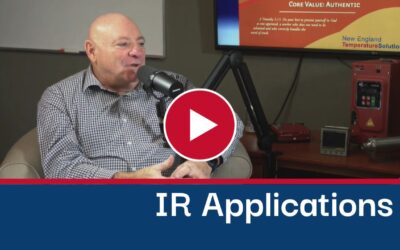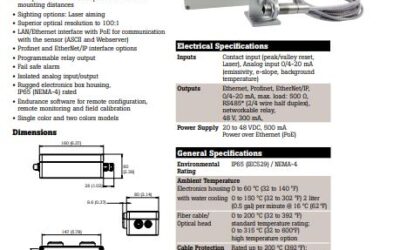As referenced earlier, the PID, stability, and Accuracy of most of the controllers are similar on all sizes. However premium controller such as the 3504 and 2704 have higher accuracy to meet Mill specs and life science regulations such as 21 CFR part 11, AMS 2750 D and NADCAP.
Inputs: In the old days you used to have to specify what input you wanted, but now all eurotherm temperature controllers come with universal inputs. This means that any device with an input of 0 to 10 VDC or 0 to 20 MA can be used. Eurotherm controllers take every type of thermocouple and RTD manufacturer and have proper scaling and cold junction compensation that can be selected automatically.
Linear inputs of 0 to 10 VDC or 4 to 20 MA can be selected. When using 4-20 MA inputs a shunt resistor is used across the terminals to convert the 4-20 MA to a MV input. When configuring the Eurotherm Controller, the calculation is done for you if you use our resistor.
Several of our controllers have custom lookup tables available for non-linear inputs. The 2704 even has a logrhythmic input for vacuum gauges.
Bottom line is almost any measuring device can be connected to these controllers and configured to display for any engineering unit you require.
Outputs
Eurotherm controllers come with five outputs:
Mechanical Relay
120 240 VAC Triac
12 V VDC Logic
4 to 20 MA or 0 to 10 VDC linear valve actuator with slide wire feedback
Mechanical Relay
The mechanical relay is just that, it is a mechanical switch that will switch 120 or 240 VAC when the controller tells it to turn on. While they are very basic and simple, if your process turns on or off a lot they will wear out. They can fail either full on or full off neither one is good. Typically they are connected to contactors or solenoid valves.
Triac: A triac works the same way as a relay but instead of being a mechanical switch, it is a solid state device. It can turn on and off thousands of times more than a mechanical relay.
DC logic: Because of mercury being now considered hazardous waste and frowned upon by industry, many clients are now using SSRs instead of mercury contactors and solenoids. The SSR is turned on with a 3 to 32 VDC signal the DC logic output provides a 12 VDC output to turn the SSR on and off. The SSR can be pulsed extremely fast making it a good choice for proportional control of heaters or solenoid valves.
Linear Outputs: Medium to high-end eurotherm controllers come with 0 to 10 VDC or 4 to 20 MA linear outputs. Most of the time these signals are used to control SCR power controllers or valves. The higher the output the more power is applied to the load. On a few Eurotherm controllers we have the ability to control an actuator using slide wire feedback.
An actuator moves a damper or valve to a position. The controller needs to know where the valve is. This is done using a slide wire. Depending on the position of the actuator and a voltage drop across this resistor the controller can tell where the valve is. There are only a few controllers made in the industry that will accept this type of input. Eurotherm is one of these companies. This option is available on 2400 2600 2700 and 3500 series controllers.



